
The Delectable Past
It's easy to fall in love with a cookbook. The whimsical line drawings; careful instructions on caramelizing sugar or toasting cumin seeds; passionate treatises on the best way to truss a chicken . . . such cookbooks make me feel a buoyant sense of possibility, much like the feeling I get from certain artworks or certain novels or certain cities. The pleasure of browsing a cookbook is a little voyeuristic—the culinary version of gaping at National Geographic photos of an exotic land—but in my case, at least, it's usually aspirational. Anyone who has felt the numbing mundanity of domestic life is perhaps especially susceptible to the allure of the cookbook. The inchoate yearning to make eating, the practical business of sustenance, into a ceremony of pleasure: isn't this a description of the artistic impulse?
The cookbooks I find most enticing treat cooking as a pastime rather than a necessity. These books picture delicate, otherworldly foods,.jpg) and the steps of preparation seem, from my amateur perspective, senseless. Executing the recipe becomes an all-consuming task that lasts many hours. Failure lurks behind every step and the deficiencies of my kitchen appliances are fully revealed. Experience has taught me that such recipes are best enjoyed as literature, and read while lounging on the couch.
and the steps of preparation seem, from my amateur perspective, senseless. Executing the recipe becomes an all-consuming task that lasts many hours. Failure lurks behind every step and the deficiencies of my kitchen appliances are fully revealed. Experience has taught me that such recipes are best enjoyed as literature, and read while lounging on the couch.
But not all cookbooks are so difficult or enigmatic. In fact, the most wonderful thing about the cookbook is that it obliges wild flights of fancy as well as hands-on learning. The cookbook manages to function as a manual and a storybook at the same time. The most-used cookbooks, with their oil-stained pages and broken bindings, are the ones whose recipes are written plainly, in a tone both gentle and instructive.
For those of us raised on take-out pizza, a good cookbook is worth its weight in gold. It wasn't in the kitchen of my childhood that I learned how to peel garlic or strip kale or nurture a sourdough starter, or how to stretch a meal with minestrone soup.
One of my colleagues at the Oakland Museum of California (OMCA), a registrar named Susana Macarron, tipped me off to the Museum’s sizable collection of historical cookbooks. I was delighted to spend a few days browsing this collection, which is meticulously housed in mylar sleeves and archival boxes in a remote warehouse.
I started by trying to get a sense of the collection as a whole. I sorted a bit, and decided it could be divided into three distinct genres: community cookbooks, cooking manuals published in the heyday of home economics, and food-industry publications.
Community cookbooks are the DIY branch of cookbook publishing, though they dramatically pre-date any stirrings of the DIY movement. These typically feature a collection of simple recipes, each attributed to the woman who submitted it. 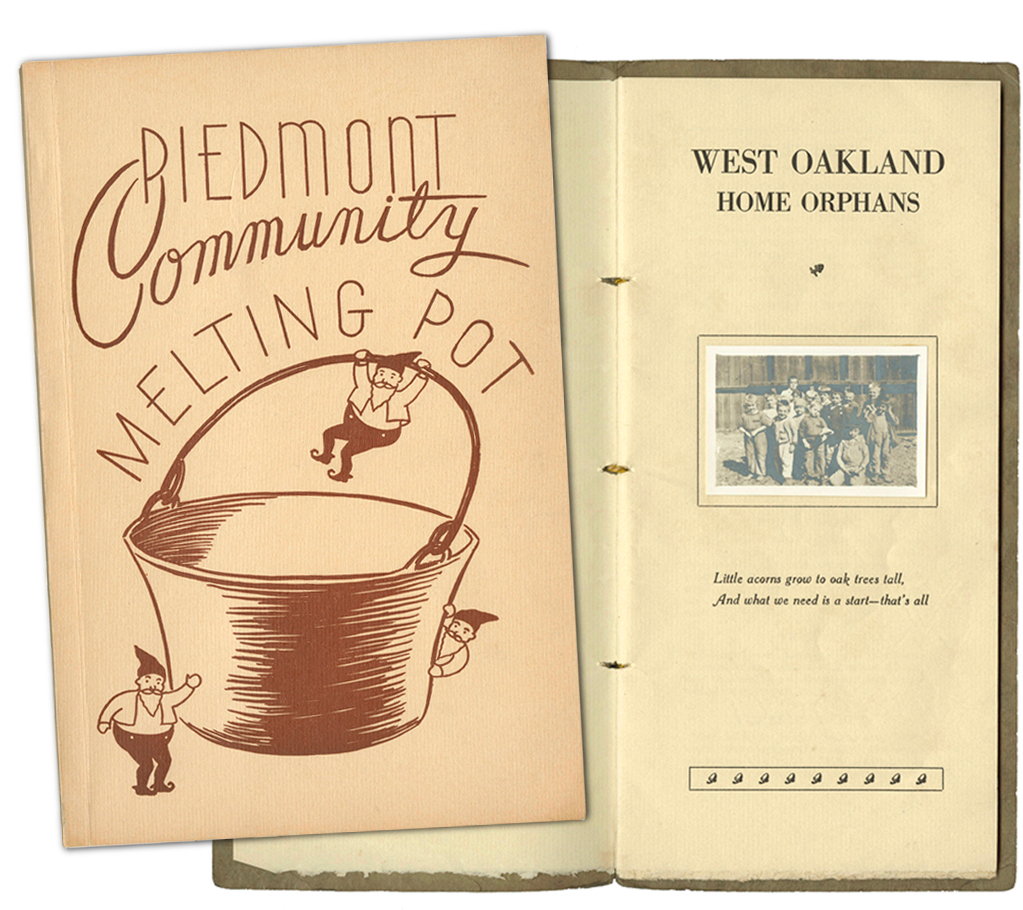 Community cookbooks are sometimes compiled to share knowledge or create community, but they’re traditionally organized by charitable groups of women and sold to benefit a cause.
Community cookbooks are sometimes compiled to share knowledge or create community, but they’re traditionally organized by charitable groups of women and sold to benefit a cause.
For instance, OMCA’s collection includes a thin, undated publication dedicated to the orphans of West Oakland that includes a black-and-white group photo of said orphans on the frontispiece. There’s also the official cookbook of the 1941 Walnut Creek Women's Club, at that time an area more rural than suburban, and a lovely 1949 volume from Berkeley called Let's Eat, with recipes for watermelon-rind pickles and a green salad with chicory, endive, dandelion, and watercress—a salad that bears all the hallmarks of California-style gourmet cuisine, thirty years before Chez Panisse opened its doors. A delightfully passé version features recipes by the wives of the San Francisco 49ers.
Cookbook publishing spiked at the turn of the last century, when a deluge of experts tried to convince women that cooking was not an intuitive, multi-sensory experience, but rather an exact science. .jpg) The collection features a range of hardbound volumes representative of this era, graced with delicate pages speckled by foxing. They document the birth of the home-economics movement, which left its imprint not only in junior high school curricula, but in an epidemic of pedantic cooking instruction.
The collection features a range of hardbound volumes representative of this era, graced with delicate pages speckled by foxing. They document the birth of the home-economics movement, which left its imprint not only in junior high school curricula, but in an epidemic of pedantic cooking instruction.
The advent of domestic science, as it was called, was made possible by the standardization of oven temperatures through the invention of the all-electric kitchen stove, and it was led by a cooking instructor named Fannie Farmer, who has the dubious distinction of forever turning a pinch of salt into a perfectly level 1/4 teaspoon. Pre–Fannie Farmer recipes were a flexible collection of proportioned ingredients; post-Farmer, recipes became scientifically precise formulas designed to yield the exact same result every time. Democratizing cooking unfortunately meant automatizing the cook.
The bulk of the OMCA's collection, however, isn’t made up of these bibles of domestic science; nor is it mostly feel-good community compilations. Instead, the Museum holds a huge selection of cookbooks published by the food industry. Food manufacturers seem to have struck on the idea of using cookbooks to stimulate a market for their products around the 1890s, and the practice continues today. Thank food-industry cookbooks for middle-American favorites such as Rice Krispie Treats, Oreo Cookie crust cheesecake, or 7-Up punch.
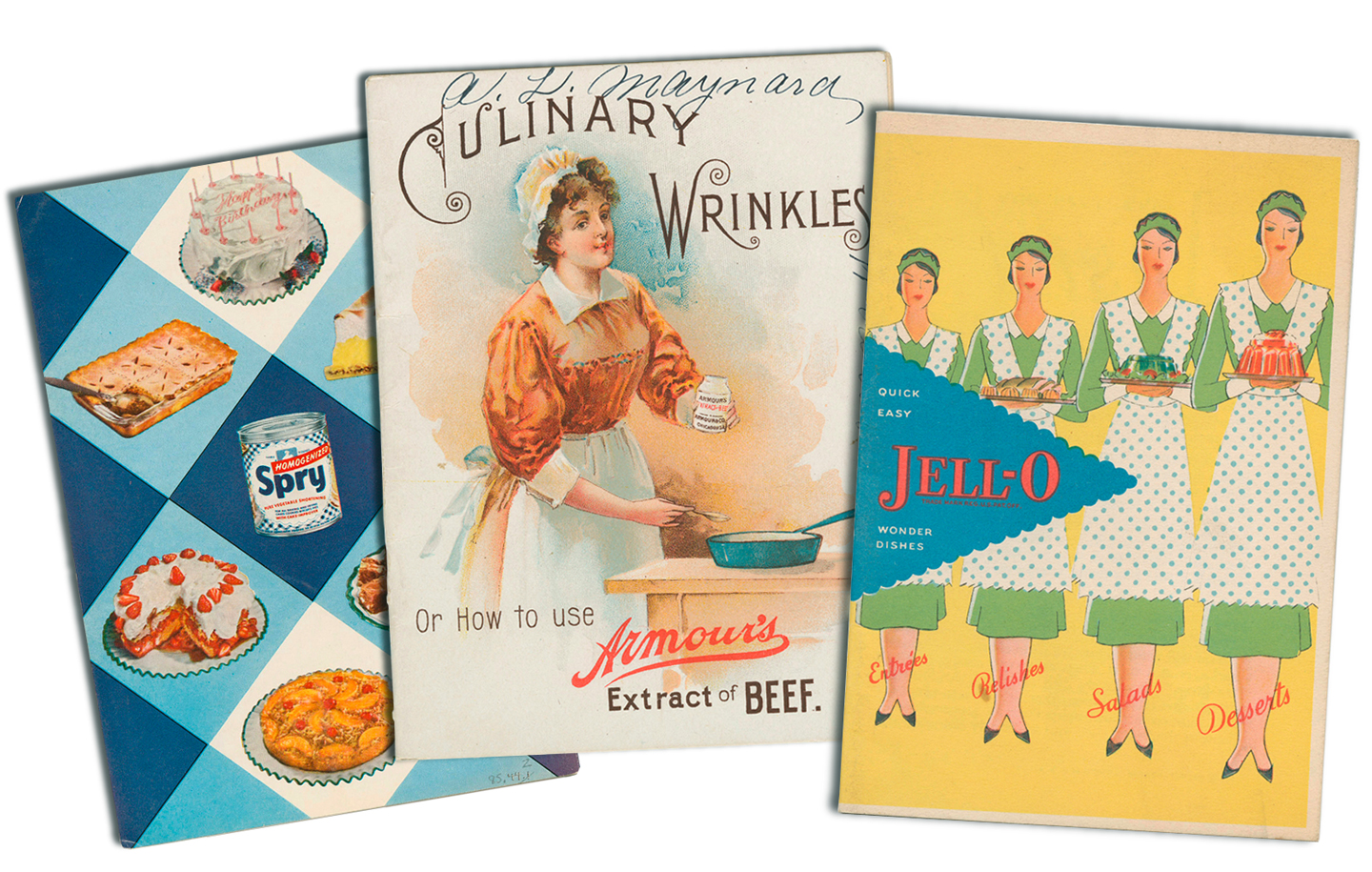
Jello, Heinz, Wesson Oil, Campbell's Soup, Planters Peanuts, Nescafé, and hundreds of other companies issued such cookbooks, as did many produce growers and kitchen-equipment manufactures. The cookbooks were typically distributed for free, or could be sent for with a coupon. In contrast to other cookbooks of the period, they were beautifully illustrated and printed with high production values—they were, after all, advertisements for their ingredients.
Culinary historians have shown little interest in industry cookbooks, and serious chefs have scoffed at them for decades. When the food luminary James Beard sheepishly accepted a deal designing recipes for the frozen-food company Green Giant—he needed the money—he told his friends he'd become a "culinary whore."
I initially regarded the collection with skepticism and disappointment. These weren't really cookbooks, I lamented, they were corporate ephemera. Moreover, we were missing essential volumes from the protagonists of California food history. California claims all three of the holy trinity of woman foodies: Alice Waters, M.F.K. Fisher, and Julia Child, none of whom are represented here. Superstar chefs Thomas Keller and Wolfgang Puck made their careers in California, as did many of the cookbook writers that made veganism go mainstream. Oakland's own cookbook literati includes the unlikely duo of Bobby Seale (Barbeque'n with Bobby Seale) and Gertrude Stein (via The Alice B. Toklas Cookbook). Alas, none of these paragons of California food are currently represented in the collection.
.jpg)
Instead, I gingerly browsed staple-bound pamphlets that featured California oranges or avocados, dried fruit or grape juice, canned fish and more. I saw that marshmallows were introduced to the world adorned with art deco designs, that grape juice was initially promoted as a weight-loss tool, and that, for a time, pasta wasn’t known as "pasta" but rather as “macaroni product.” I began to understand the collection’s surfeit of baking-powder cookbooks when I realized that baking powder companies needed to persuade home cooks to trade out the eggs in their cake recipes for a tasteless white powder.
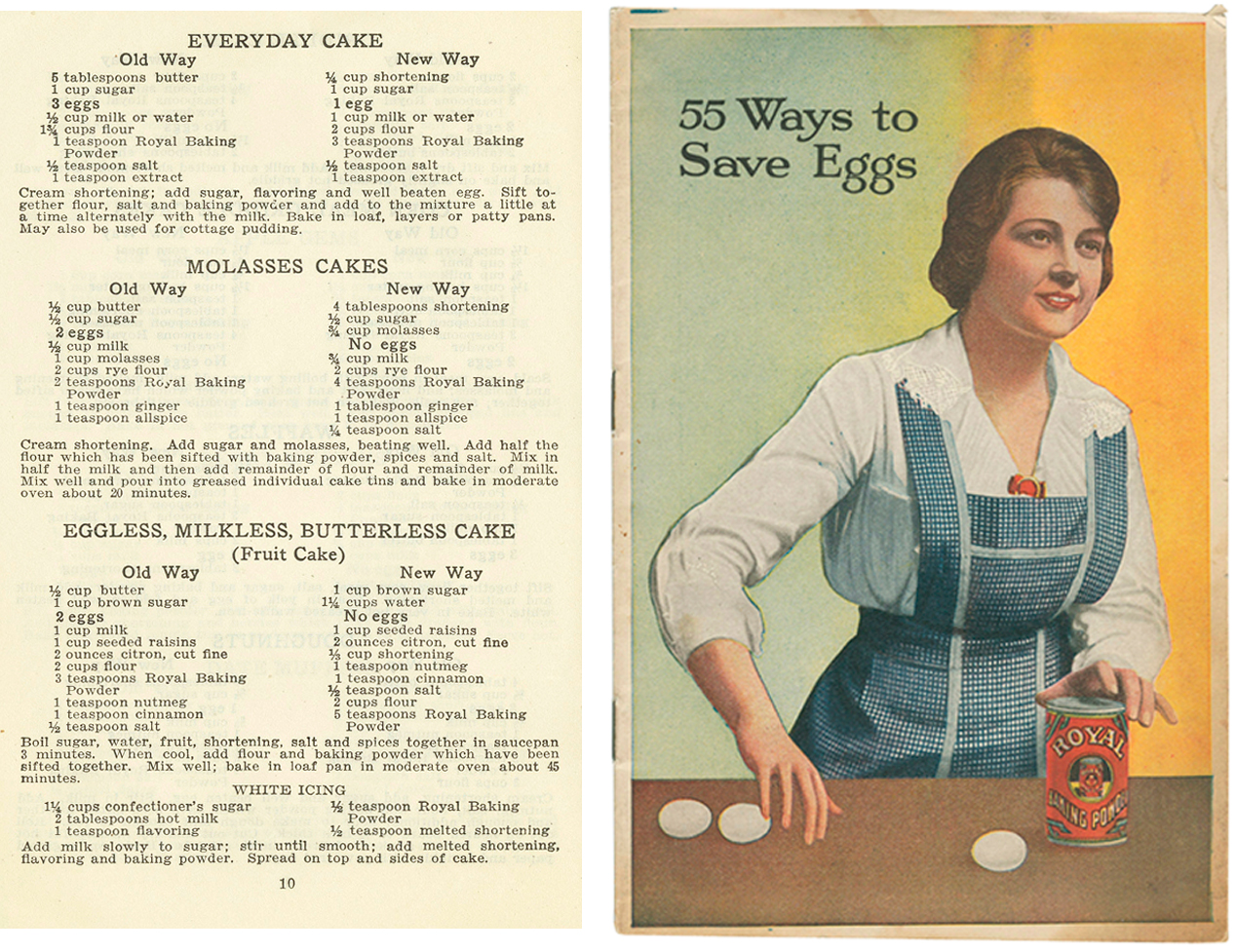
Taken in sum, OMCA’s cookbook collection describes a piecemeal history of the astonishing growth of the California food business in the twentieth century. Not the culinary history I was looking for, but most certainly a compelling story about food.
The advertising wonder of the California Raisins makes an instructive example. Claymation dried fruit styled after African American musicians singing Motown classics improbably raised American raisin consumption in 1988 to an all-time high. But the California Raisins were hardly US raisin growers' first foray into innovative marketing. The iconic Sun-Maid girl, with her hair tucked in a bonnet and her arms wrapped around a basket of grapes, was styled on a grape seeder who was “discovered” in a fruit-packing factory and then travelled the country as a raisin ambassador. This was one of the first instances of using a human mascot to sell a particular brand of food. There was also a dramatic publicity stunt in 1915 that involved dropping raisins from an airplane onto the streets of San Francisco.
.jpg)
From the beginning, growers understood that raisins needed to be promoted not only as a snack food, but as an ingredient that could be added to familiar recipes—cookies, scones, salads. This strategy, which vastly expanded the market share for raisins, was accomplished through the steady publishing and distribution of cookbooks. Cookbooks directly addressed the mothers and wives who controlled the nation’s diet, and they spelled out exactly how to prepare and eat this exotic treat. Indeed, cookbooks worked precisely to make raisins less exotic and more everyday. (A recipe for Fresno lemon raisin pie looks quite appetizing; a bowl of golden raisins tossed with French dressing, less so.) Judging by the average bakery’s pastry case, it was a successful campaign.
Industry cookbooks also make evident the complicated choreography of supply and demand that determines the success of any new consumable in the marketplace. Spanish missionaries began growing California grapes in the eighteenth century to supply wine at Catholic mass, though it quickly became clear that the growing potential far outstripped the need for sacrament wine. The California wine industry initially flourished but then took a nosedive during Prohibition. Even after the repeal of Prohibition, the effects lingered. That's when the California Wine Council stepped in, launching an aggressive public-relations campaign that included dozens of cookbooks.
The cookbooks promoted wine-drinking by suggesting pairings and recipes, but the wine industry's real coup was the production of cookbooks (and magazines) that more generally articulated the hallmarks of California living: casual outdoor dining, unfussy cooking, and fresh produce, always accompanied by wine. California wine is now a $122-billion-dollar industry.
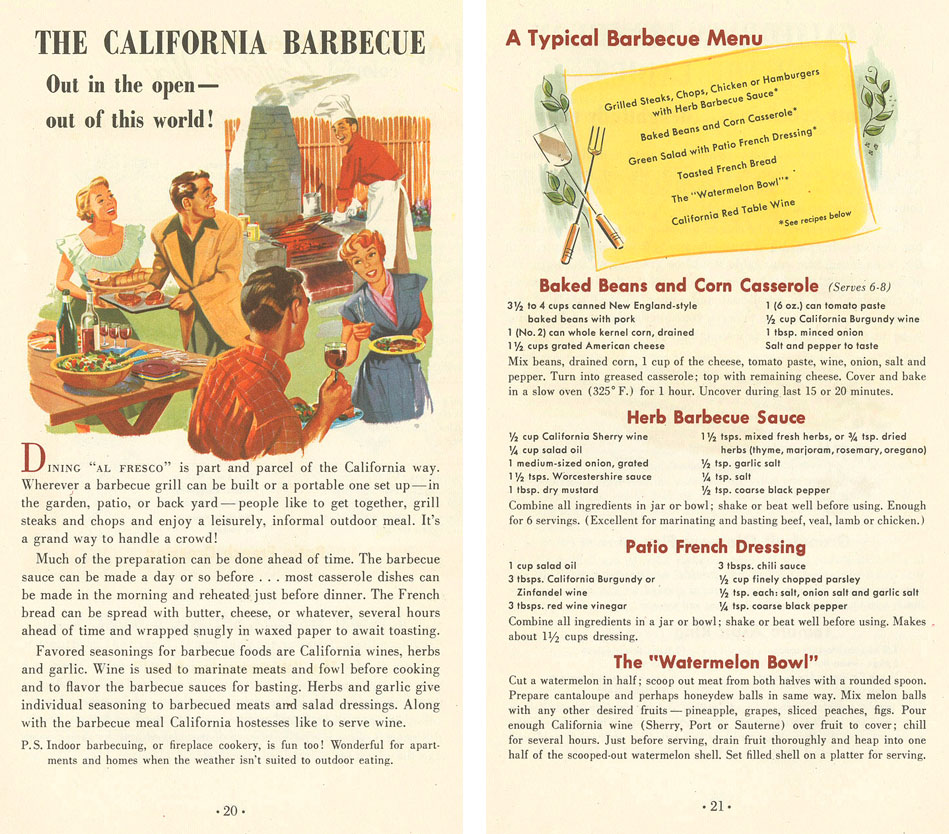
The American diet is a combination of what we'd like to eat, what's available to eat, and what we can afford to eat. Food lovers rarely look at all three in balance. The industry cookbooks in OMCA's collection reveal the very real presence of food business in our everyday diet decisions.
Finally convinced that the collection had adequate gravitas, I let myself enjoy the kitschy designs and charming illustrations. I lingered over one illustration in particular: a yellow-orange block of molded Jello encasing an entire city. I remembered then that my grandmother used to make a special Jello dish for our family reunions. Starting with red and ending with violet, she carefully layered a thin stripe of Jello in every color of the rainbow. This dish is perhaps at the opposite spectrum of what I might now consider good food, along with fish sticks served with ketchup and casseroles topped with crushed cornflakes. My habit has been to eschew these details of my personal culinary history, but I paused to remember my delight at that strange concoction. A quivering square of Rainbow Jello was certainly the most beautiful food I’d ever encountered. Wherever the recipe came from, I decided, it would be sad thing to relegate that pleasure to the dustbin of history.
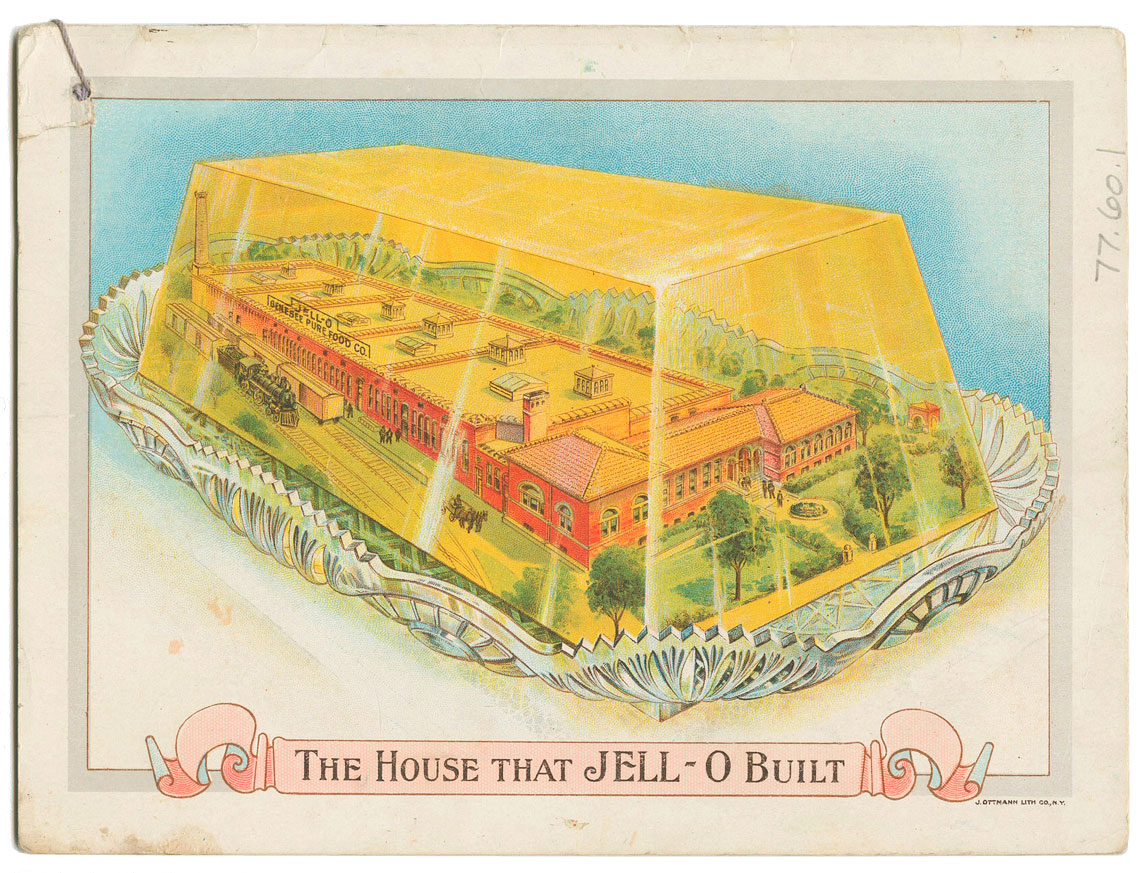
First image: Photographer unknown, circa 1935. Courtesy National Media Museum. All others: Collection of the Oakland Museum of California, gifts of Jan Berkefelt, Joan Parker Watkins, Lloyd Sigmon, Mrs. Alice Sproge, Mrs. Esther Carlson, Mrs. George Benton, Mrs. Janice Robinson, Mrs. Sandra Lawrence, Mrs. Steven Oppenheimer, Roger Jacoby & Calinor Jacoby, Susan Burns, and Thomas E. Curran, III. Special thanks to Susana Macarron, Nathan Kerr, and Debra Peterson.
Projects















